
Nosara resident Alexander Cabalceta is sitting in the first row of the stadium seating in Nosara’s multipurpose hall. With a budding smile, he says it was almost an obligation to come to the communal meeting about Route 160 with Claudia Dobles, coordinator of the Chorotega Region for the national government.
“There aren’t many opportunities like this,” said Cabalceta. Out of excitement, he asked for the time off work and arrived at the hall an hour early, to get a good seat.
A paper mask, to avoid inhaling dust, hangs from his dry hand. He says it is partly a sign of protest and partly out of necessity. Cabalceta, like many, gets around town by bicycle and says that the dust from the streets tends to mess him up.
“I want Mrs. Claudia to know that the dust does not allow me to breathe well, see well, or live well. She can do something,” he stated.
***
It’s almost 9 a.m. in the hall. By this time, the sun’s rays are already pleasant and the temperature does not get to 30 degrees Celsius (86 degrees Fahrenheit), but even so, people’s eyes burn and their skin itches. In the environment, a constant and irritating gray layer of dust persists, typical in a town where constant construction is never completed on Route 160.
It is not the first time that an official from the executive branch has come to promise them in vain that the government will finish the 10 kilometers between Garza and Nosara, without any positive results.
In fact, the first promises that The Voice of Guanacaste reported were in 2007, when the Minister at that time, Karla Gonzalez, said that paving would begin in 2009 and stated: “I don’t promise things that I don’t fulfill.”
After 12 years of dashed hopes, at this meeting, the Ministry of Public Works and Transportation (MOPT) affirms that 68% progress has been made on the 10 kilometers, and that the work will be completed in five months, although the same Ministry acknowledges that it should have been completed in June of this year.
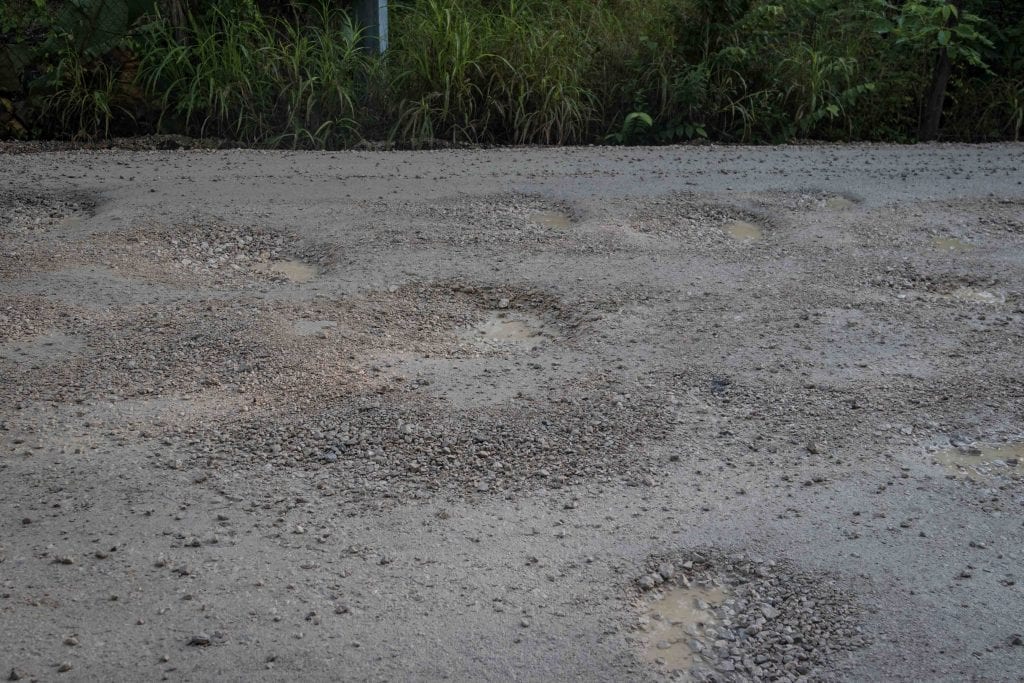
A few days later, Alonso Mora would explain to La Voz that the new delay was due to the fact that the National Road Council (Conavi) had not issued contracts to pay for the materials needed to finish the work. According to Mora, the contracts were not finalized until November.
***
The ambient noise of the hall mixes with coughing from the audience, a pre-recorded marimba tune and the distant sound of the big construction machinery, which arrived a day before the first lady’s visit.
It is so common for machinery to fix the road just before a government official comes that the neighbors come with banners and cries of protest already prepared.
“The streets only get fixed when you come!”, “Where is the pavement for 160?”, “Dust and potholes also kill”, “Stop lying to Nosara”… the list goes on.
Days before, the district’s syndic, Marco Ávila, told this newspaper that the area residents prepared collectively for the meeting. They had long sessions to determine what their greatest needs were and how they have to communicate them to the authorities.
“We hope that it will be announced that the first ten kilometers will be finished and that they will start with ten more. We need concrete news,” he stated.
Among the audience, there are elderly people, children brought by mothers who wanted to attend but could not leave them alone, dogs, cats and even surfboards. Complaints in English and Spanish are intertwined in the ear. A mixture of faces and experiences that pretty much sums up the town.
At almost 10 a.m., one hour after the scheduled time, a vehicle arrives at the facility that, notoriously, has just gone through the experience of Route 160. Tires caked in mud, windows covered in dust, the bumper low.
From it, Dobles emerges, walking upright, with a dazzling smile and dressed from head to toe in a white suit that already has small smudges of dirt. She is also accompanied by MOPT Minister Rodolfo Mendez, Nosara’s syndic and other officials in charge of the work in the region.
The music is turned off and the hall is silent for the first time that morning. The protocol committee begins by asking the people to restrict conversation to just the problems of road infrastructure in Nosara. “It is what interests us most and interests you most,” they say.
The announcement comes quickly: in five months (by April or May 2020), the 10 kilometers between Garza and Nosara “have to” be finished with a “surface treatment.”
Engineer Mora will explain later to La Voz that the new promises from the first lady do not include pavement. At least not until Conavi manages to make new agreements with MOPT and they both manage to add it to the budget. “This is a function that is out of our hands. It is up to Conavi to react to it” he emphasized.
The construction will also include three two-lane bridges over the Rempujo, Esperanza and Sube y Baja creeks, which connect Los Angeles de Garza, Nosara, Samara, Ostional and Santa Cruz.
In total, the authorities reported that the project will cost ¢4,272 million (about $7.2 million) and will be performed by the Infrastructure Works Construction Company (Codocsa– Empresa Constructora de Obras de Infraestructura).
Just 20 minutes have passed and a murmuring invades the open auditorium. Several shouts begin to be heard: “Liar!”, “In five more months, the dust will kill us”, “You’re going to let us die!”
Dobles, who went through a similar experience on July 25 in this same canton, raises her tone of voice and insists, “We are not insensitive to this community. We understand the frustration, really. I read what you guys write to us on the social networks, seriously, I read them. We well know that you guys have been waiting for decades. You are not alone. We are making a dent in getting started.” Silence takes over again.
Minister Rodolfo Méndez gets up from his chair and takes the microphone. With his stiff but firm voice, he reminds everyone that he has been in this position three times but says that this time “is different” because the current government is focused on finishing the project. “There is a historical debt with Route 160,” he laments.
He also explains that one of the biggest problems has been financing, but this time “MOPT approved an addendum that guarantees the supply of granular base and the materials needed to finish.”
This new agreement is based on a “permanent budget agreement” with Conavi for ¢2,981 million (about $4.9 million). This agreement establishes that the money cannot be spent on anything else and that it is guaranteed to buy all the materials and finish those ten kilometers in the five months agreed upon (the bridges are not included in that budget).
Architect Dobles insists that in exactly one month, in the second week of December, she will personally return to see the progress of all of these projects.
She also reported that MOPT will conduct a study to define the possible financing of the second and third stages of the Route, with new stretches of approximately 36.8 kilometers (22.8 miles) in total, which will cover the connections from Nicoya and Santa Cruz to the district.
“They are finally looking at us,” says Teresa, a plump, gray-haired, brown-skinned woman who timidly asked that her last name not be used in this publication. She said she came without expectations, but that seeing the first lady in person has brought her “hope.” At her side, four women applaud, saying that the government paid attention to them “once and for all.”
The government set aside 15 minutes for the audience to comment and clear up any doubts they may have.
“When is it really going to be finished?” they question. “It should be finished in five months.” “Have you assessed the health risks and impact on the environment?” they ask. “We have them very present,” they respond. “How do you guarantee us that they will finish the work next year?” they emphasize. “We are going to monitor it very closely,” they explain. “How do we know they won’t come steal it from us again?” “We will be keeping an eye on everything,” they say.
The questions turn into comments.
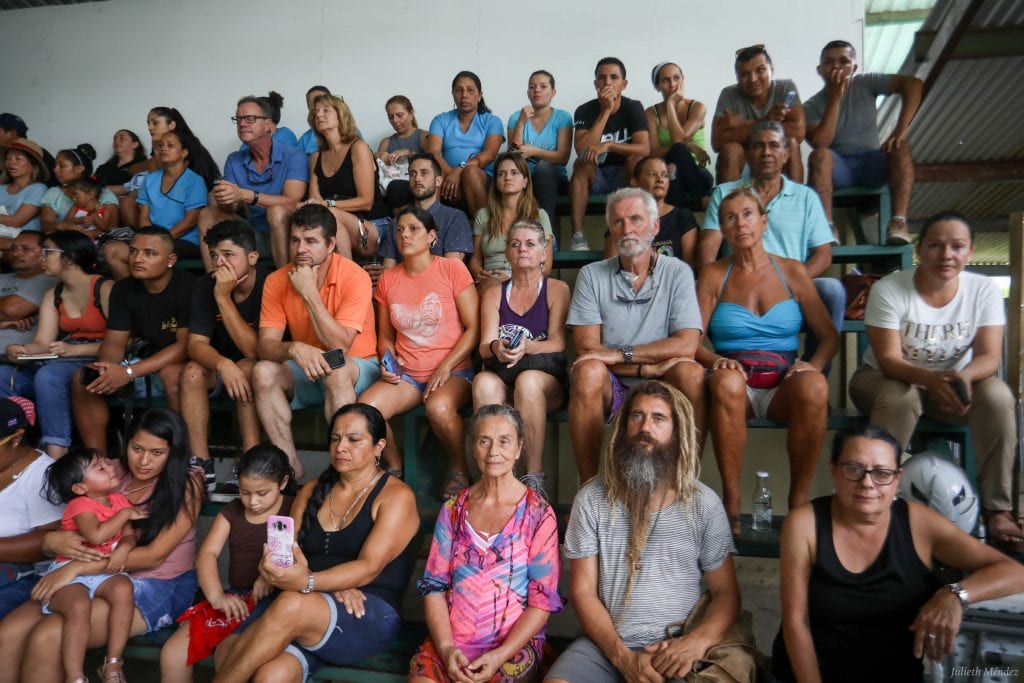
Encuentro ciudadano_Ruta 160_Primera Dama Claudia Dobles_Foto Julieth Méndez_15/11/2019
“Nosara is a courageous town, but we are tired. This route is killing us, Claudia. It limits our development, it kills us. We are breathing poison,” says an elderly man in his 70s who insisted in being given the microphone multiple times.
Dobles responds that she understands “your suffering”, that she wants “to be a factor that helps them.”
“We want actions,” the man says, releasing the microphone.
It is 10 minutes to 11 a. m. and the crowd begins to fill with murmurs, between positive and negative comments. The first lady’s advisors put an end to the meeting and try to get her out quickly, without allowing the press to ask questions.
Dobles, however, stops to talk with three residents. Beyond talking about the route, they quickly confess they don’t have enough work, that they are single mothers because their husbands beat them, the way the money they have isn’t enough with their four or five children and how they need help.
She listens attentively, nods and gently touches their arms one at a time.
“You are a mother, you can help me,” says one of the women as her voice cracks slightly. Dobles asks for their phone numbers and promises that she will call them soon.
She takes photos with others and gets back in the dirty vehicle in which she arrived. She drives away, kicking up more of the thin layer of dust that always covers the town.
Nosara resident Alexander Cabalceta, who is dazzled by the interaction, sees her leave. “I don’t know, but I want to believe her. It remains to be seen,” he remarks to another man that is with him.
Days after her departure, the machinery that seems like a legend in Nosara continues working. As Alexander said, it remains to be seen.


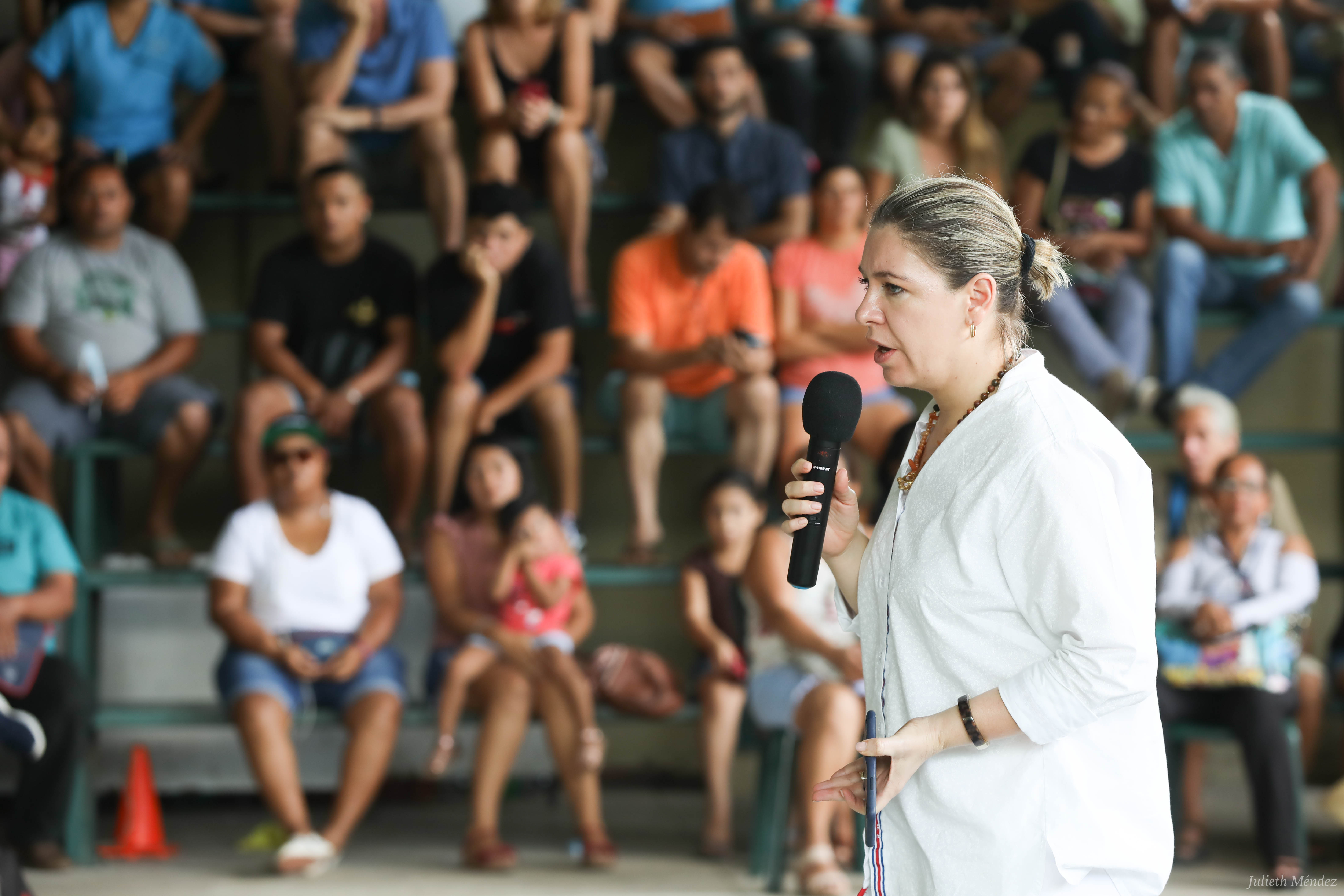

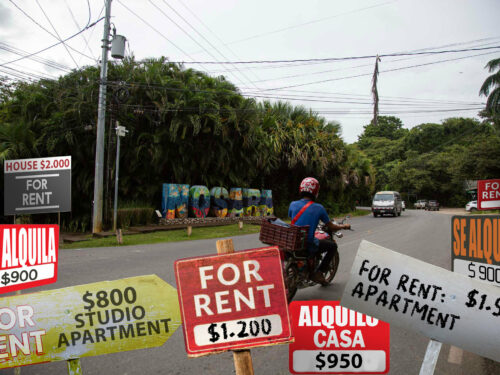
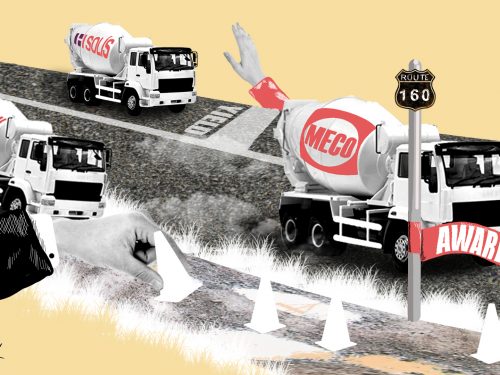

Comments